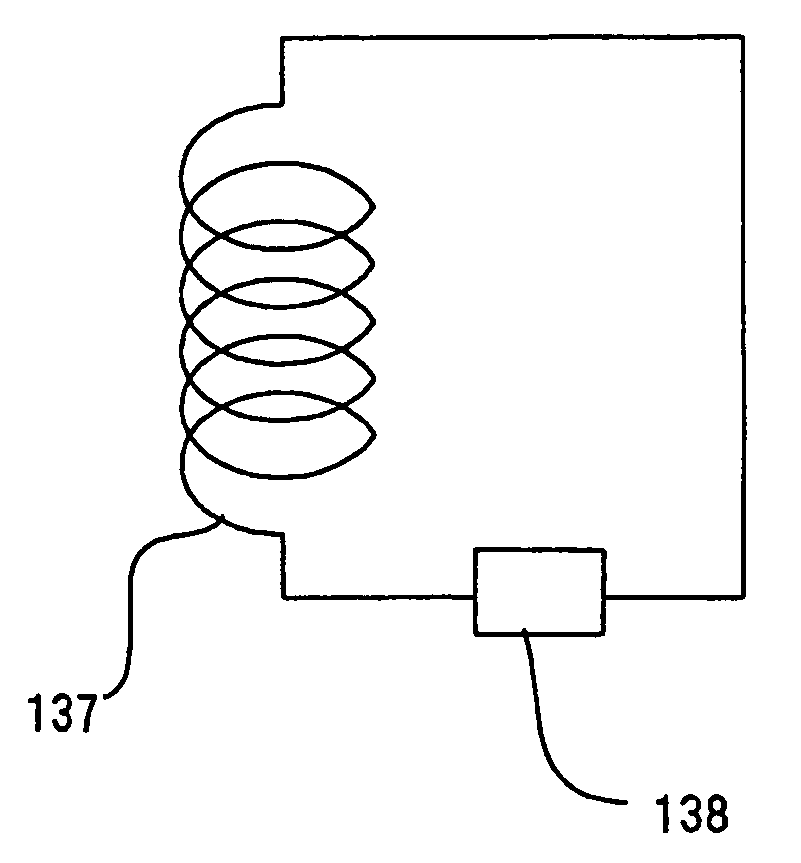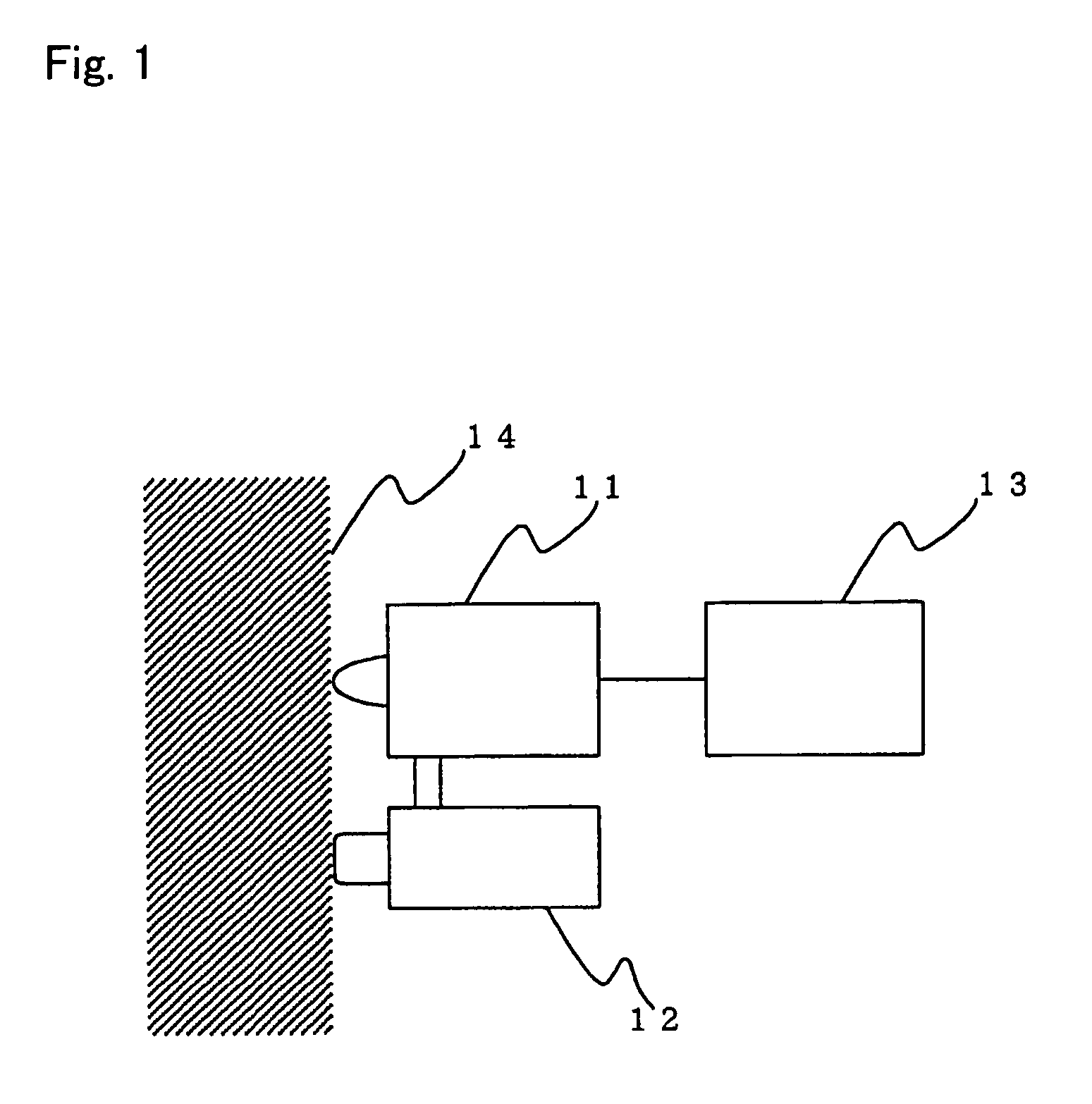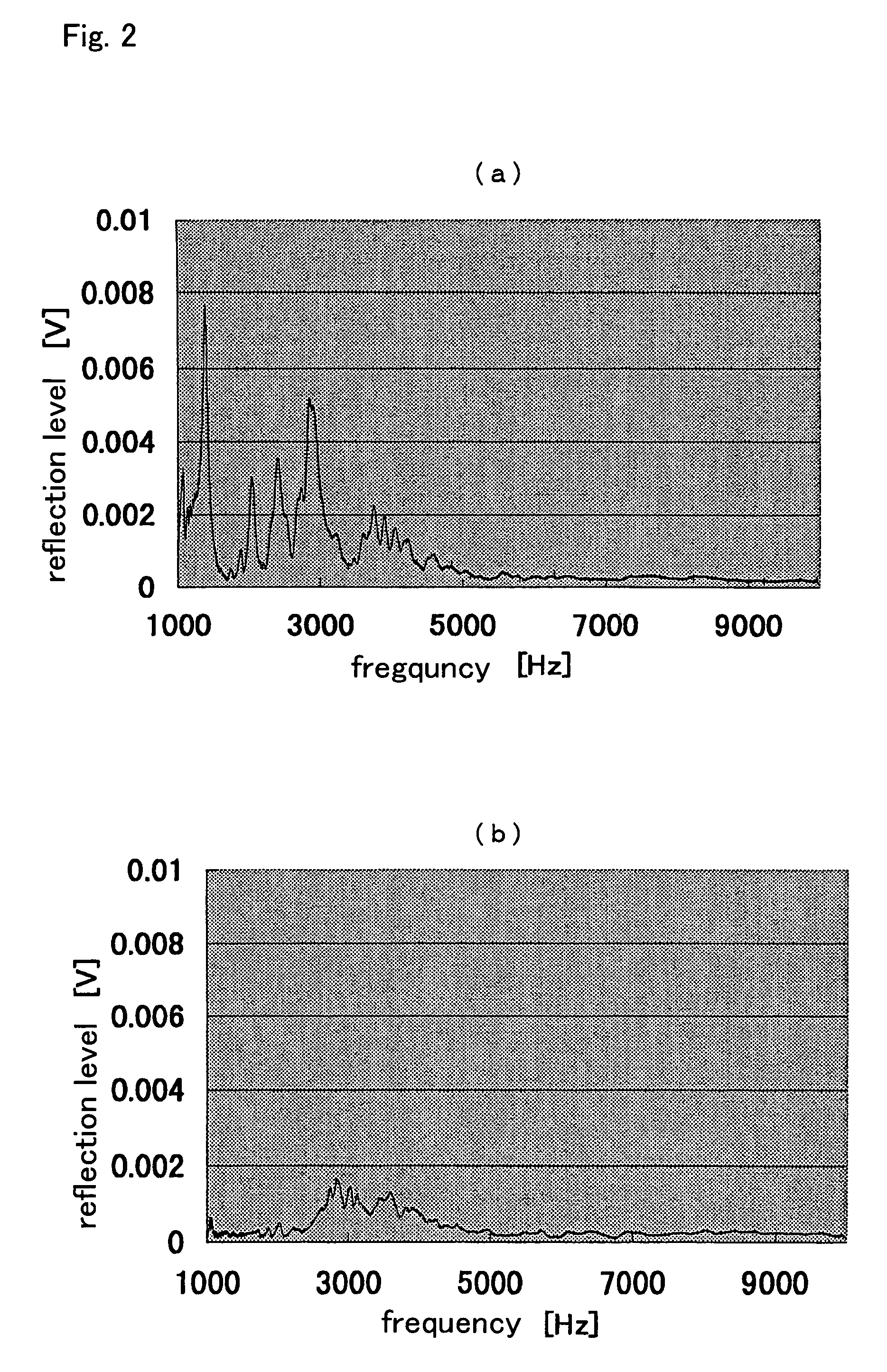Structure inspection device
a technology of structure inspection and inspection device, which is applied in the direction of acceleration measurement using interia force, specific gravity measurement, instruments, etc., can solve the problems of limited inspection range, affecting practicability, and affecting the inspection effect of supersonic waves
- Summary
- Abstract
- Description
- Claims
- Application Information
AI Technical Summary
Benefits of technology
Problems solved by technology
Method used
Image
Examples
embodiment 1
[0045]FIG. 1 is a block diagram illustrating the schematic construction of a structure diagnosis apparatus according to a first embodiment of the present invention. As shown in FIG. 1, the structure diagnosis apparatus according to the first embodiment includes a vibration detector 11 for detecting the vibration of a concrete structure 14, a vibration unit 12 by which vibration is applied to the concrete structure 14, and a display device 13 for displaying the vibration detected by the vibration detector 11.
[0046]FIGS. 2(a) and 2(b) illustrate the vibration response conditions of the concrete structure 14 displayed by the display device 13, wherein FIG. 2(a) represents the vibration characteristic of a part having an internal defect, and FIG. 2(b) represents the vibration characteristic of a sound or normal part having no internal defect. FIG. 3 illustrates the vibration characteristic of the vibration detector 11.
[0047]FIG. 4(a), FIG. 4(b), FIG. 5(a) and FIG. 5(b) are views illustr...
embodiment 2
[0073]Hereinafter, reference will be made to a structure diagnosis method according to a second embodiment of the present invention while referring to FIGS. 11 through 13. FIG. 11 is a flow chart illustrating a method of diagnosing an internal defect in a concrete structure according to the present invention. FIG. 12 is a graph illustrating the amplitude levels of vibrations produced by vibrating a part having an internal defect and a part having no internal defect with application of a fixed force. FIG. 13 is a graph illustrating the relation between the amplitude levels of vibrations and the distances (depth) from a measuring surface to internal defects measured in a part where there exist internal defects.
[0074]The diagnosis of an internal defect in a concrete structure is carried out by using the above-mentioned structure diagnosis apparatus according to a procedure as shown in the flow chart of FIG. 11. First of all, it is determined whether a data base concerning the vibration...
embodiment 3
[0081]Hereinafter, reference will be made to a structure diagnosis apparatus according to a third embodiment of the present invention while referring to FIG. 14. FIG. 14 illustrates an example in which a vibration detector 11A is comprised of a plate spring, with the remaining construction of this embodiment being similar to that of the aforementioned first embodiment. In FIG. 14, a weight 111 is connected with a contactor or probe 113 through plate springs 112-2, and a coil 121 is wound around each of the plate springs 112-2 for converting a change in magnetic permeability into a corresponding electric signal. A vibration arriving at the contactor 113 is transmitted to the weight 111 through the plate springs 112-2. At this time, as illustrated in the aforementioned third embodiment, a resonance frequency fo determined by the spring constant k of each plate spring 112-2 and the mass M of the weight 111 is calculated by the above-mentioned formula (1).
[0082]The plate springs 112-2 a...
PUM
 Login to View More
Login to View More Abstract
Description
Claims
Application Information
 Login to View More
Login to View More - R&D
- Intellectual Property
- Life Sciences
- Materials
- Tech Scout
- Unparalleled Data Quality
- Higher Quality Content
- 60% Fewer Hallucinations
Browse by: Latest US Patents, China's latest patents, Technical Efficacy Thesaurus, Application Domain, Technology Topic, Popular Technical Reports.
© 2025 PatSnap. All rights reserved.Legal|Privacy policy|Modern Slavery Act Transparency Statement|Sitemap|About US| Contact US: help@patsnap.com



